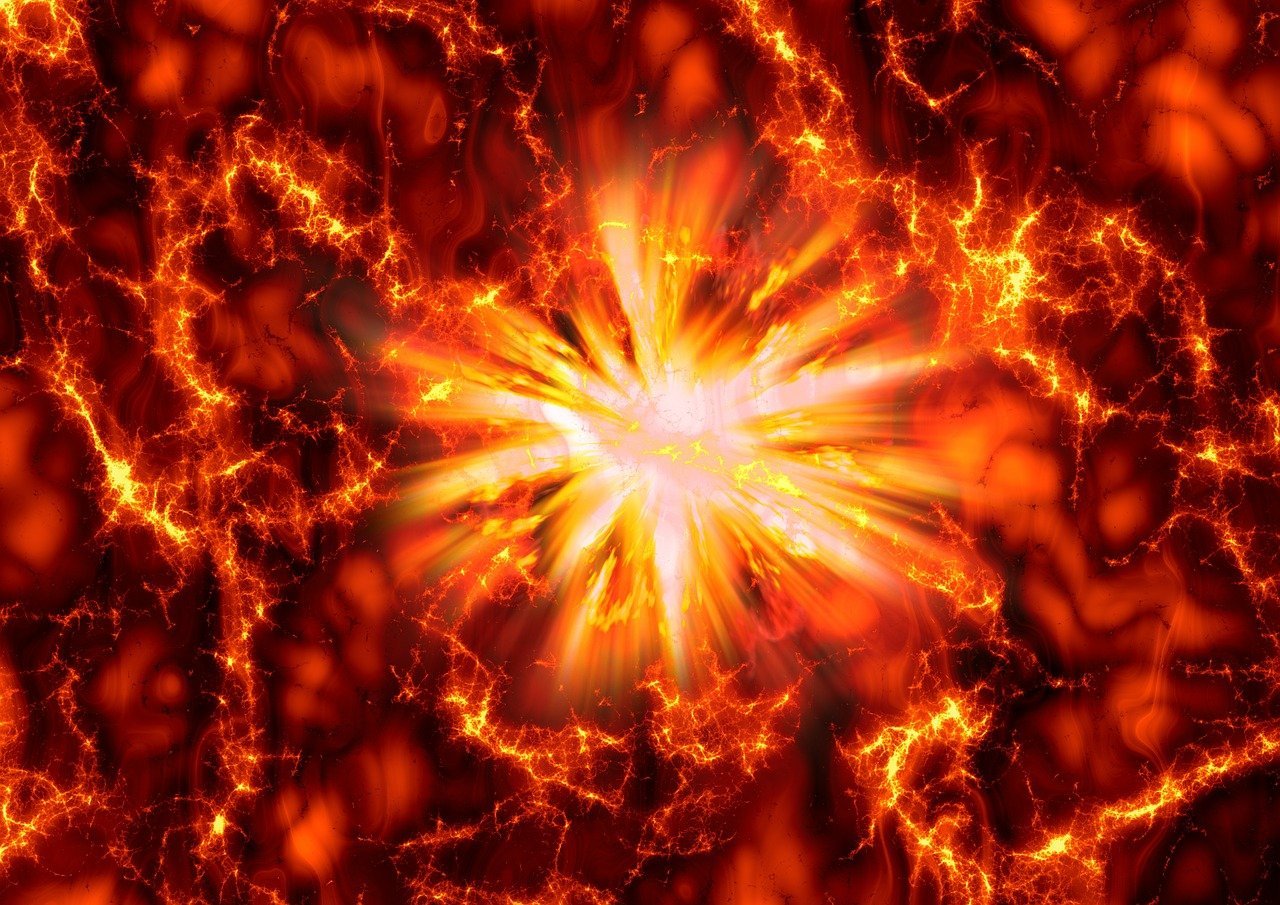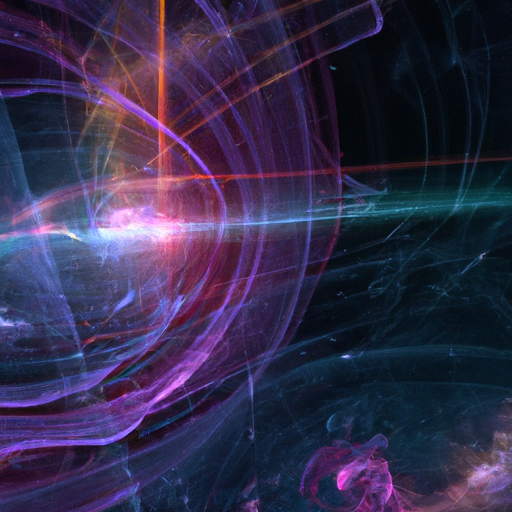Step back in time and explore the origins of the universe as we know it with an in-depth look at Cosmic Microwave Background Radiation. These cosmic echoes, undetectable to the human eye, hold the key to unraveling the mysteries of the Big Bang. Journey with us as we uncover the fascinating story of how this radiation was discovered and how it continues to shape our understanding of the cosmos.

What is Cosmic Microwave Background Radiation
Definition
Cosmic Microwave Background Radiation (CMBR) refers to the electromagnetic radiation leftover from the early stages of the universe, specifically from about 380,000 years after the Big Bang. It is often referred to as the “afterglow” or “echo” of the Big Bang. CMBR is a faint, uniform radiation that fills the entire observable universe and has a temperature corresponding to just a few degrees above absolute zero.
Discovery
The discovery of CMBR is attributed to the Nobel Prize-winning physicists Arno Penzias and Robert Wilson, who accidentally stumbled upon this radiation in 1965. They were trying to detect and eliminate any interference in their microwave communication system when they discovered a persistent noise. After a thorough investigation, they concluded that the noise they detected was not from any terrestrial source but instead originated from outer space. This serendipitous discovery led to a groundbreaking revelation in cosmology.
Properties of Cosmic Microwave Background Radiation
Temperature
One of the key properties of CMBR is its consistent and uniform temperature throughout the observable universe. The temperature of CMBR is approximately 2.7 Kelvin (-270.45 degrees Celsius or -454.81 degrees Fahrenheit), making it one of the coldest known components of the universe. This remarkable uniformity implies that the early universe was incredibly homogenous at the time when the radiation was released.
Uniformity
CMBR is remarkably uniform, with almost no significant variation in temperature across the sky. The variations in temperature are incredibly small, measuring about one part in 100,000 or less. This uniformity suggests that at the time of the emission, the universe was incredibly isotropic, meaning it had the same physical properties in all directions.
Polarization
CMBR also exhibits a polarization pattern, indicating the orientation of the electromagnetic waves. The polarization of CMBR provides valuable insights into the physical processes occurring in the early universe, such as the effects of gravitational waves, magnetic fields, and interactions between particles. By studying the polarization of CMBR, scientists can gain a deeper understanding of the early stages of the universe’s evolution.
Origin and Significance of Cosmic Microwave Background Radiation
Origin
The origin of CMBR dates back to the early stages of the universe, specifically around 380,000 years after the Big Bang. At that time, the universe was incredibly hot and dense, filled with a primordial plasma consisting of protons, electrons, and photons. As the universe expanded, it cooled down, allowing electrons and protons to combine and form hydrogen atoms. This process, known as recombination, released an enormous amount of energy in the form of photons, which then scattered and dispersed throughout space.
The Big Bang Theory
The discovery of CMBR provided strong support for the Big Bang Theory, which states that the universe originated from a hot and dense state nearly 13.8 billion years ago. The detection of CMBR confirmed several predictions of the theory, including the existence of a uniform cooling radiation leftover from the early stages of the universe. This groundbreaking discovery helped solidify the Big Bang Theory as the most widely accepted explanation for the origin and evolution of the universe.
Significance in Cosmology
CMBR holds immense significance in cosmology as it provides a snapshot of the universe in its infancy. By studying the properties of CMBR, scientists can gain valuable insights into the nature of the early universe, its composition, and the physical processes that governed its evolution. The uniformity and polarization of CMBR serve as crucial pieces of evidence for understanding the formation of large-scale structures, the presence of dark matter and dark energy, and the early stages of cosmic inflation.
Detection and Measurement of Cosmic Microwave Background Radiation
Radiotelescopes
The detection and measurement of CMBR require specialized instruments known as radiotelescopes. These telescopes are designed to receive and amplify the faint signals emitted by CMBR. By carefully calibrating the sensitivity and frequency range of the telescopes, scientists can capture and analyze the cosmic microwave radiation.
Penetration of Earth’s Atmosphere
CMBR poses a unique challenge in its detection due to the interference caused by Earth’s atmosphere. The atmosphere absorbs and emits microwave radiation, leading to significant noise and distortion in the measurements. To overcome this hurdle, astronomers have built ground-based observatories in remote locations with dry climates and high altitudes. By operating in locations with minimal atmospheric interference, researchers can obtain more accurate measurements of CMBR.
Cosmic Variance
Cosmic Variance refers to the inherent statistical fluctuations in the distribution of CMBR. These fluctuations arise from random processes in the early universe and introduce small differences in the temperature and polarization of CMBR observed in different regions of the sky. Understanding and accounting for cosmic variance is crucial to ensure accurate measurements and interpretations of CMBR data.
Measurements and Observations
Several missions and experiments have been conducted to measure and observe CMBR in greater detail. One of the most significant breakthroughs comes from the Wilkinson Microwave Anisotropy Probe (WMAP) mission launched in 2001. WMAP provided detailed maps of CMBR, revealing subtle temperature variations and polarization patterns. More recently, the European Space Agency’s Planck satellite mission provided even higher-resolution data, allowing scientists to refine their understanding of the early universe.

WMAP and Planck Satellite Missions
WMAP Mission
The WMAP mission revolutionized our understanding of CMBR by producing high-precision maps of the radiation’s temperature and polarization. WMAP operated from 2001 to 2010 and provided invaluable data for studying the evolution of the universe, determining its composition, and testing cosmological models. The mission’s findings confirmed the predictions of the Big Bang Theory, including the presence of dark matter and dark energy.
Planck Satellite Mission
Following the success of WMAP, the Planck satellite mission was launched in 2009 to further explore CMBR. Planck focused on measuring the temperature and polarization of CMBR with unprecedented accuracy and resolution. The mission provided extremely detailed maps, allowing scientists to investigate cosmological parameters, study the structure of the early universe, and search for traces of primordial gravitational waves. The data from Planck continues to shape our understanding of the universe on both large and small scales.
Mapping the Cosmic Microwave Background Radiation
CMB Anisotropies
One of the remarkable features of CMBR is the presence of tiny temperature fluctuations, known as anisotropies, across the sky. These anisotropies provide valuable information about the distribution of matter and energy in the early universe. By carefully mapping and analyzing these temperature variations, scientists can unravel the mysteries of structure formation and the evolution of cosmic structures.
CMB Power Spectrum
The CMB Power Spectrum is a plot that illustrates the statistical distribution of temperature fluctuations at different angular scales in the sky. The power spectrum provides insights into the underlying physical processes responsible for the anisotropies observed in CMBR. By comparing the observed power spectrum with theoretical predictions, scientists can test and refine cosmological models.
Mapping Techniques
Mapping CMBR requires sophisticated techniques that involve data processing, statistical analysis, and computer simulations. Scientists use specialized algorithms to clean the data from instrumental noise, atmospheric effects, and other sources of interference. By employing advanced mathematical and statistical methods, researchers can accurately map the temperature and polarization of CMBR, revealing crucial information about the early universe.

Cosmic Microwave Background Radiation and Inflation
Inflationary Theory
Inflationary theory proposes that the universe underwent a period of rapid expansion shortly after the Big Bang. This rapid expansion, known as cosmic inflation, explains several observed properties of the universe, including the uniformity of CMBR. Inflationary theory suggests that the early universe underwent an exponential expansion, smoothing out any irregularities and creating the uniformity seen in CMBR.
Confirmation of Inflation
CMBR plays a crucial role in confirming the predictions of inflationary theory. The uniformity and subtle anisotropies observed in CMBR provide evidence for the rapid expansion of the early universe. By studying the CMBR data, scientists can test different inflationary models and refine our understanding of the conditions and processes that occurred during cosmic inflation. This confirmation of inflation brings us closer to unraveling the mysteries of the universe’s origins.
Implications of Cosmic Microwave Background Radiation
Cosmological Parameters
CMBR measurements provide valuable information about various cosmological parameters, such as the age, geometry, and composition of the universe. By analyzing the temperature anisotropies and polarization patterns, scientists can estimate the proportions of ordinary matter, dark matter, and dark energy in the universe. These measurements contribute to our understanding of the universe’s structure and evolution on a large scale.
Structure Formation
CMBR offers insights into the formation of large-scale structures in the universe, such as galaxies, galaxy clusters, and cosmic filaments. The anisotropies observed in CMBR provide information about the initial density fluctuations that eventually led to the formation of these structures. By studying the statistical properties of the temperature variations, scientists can refine models of structure formation and better understand the cosmic web that permeates the universe.

Future Research and Discoveries
Improved Mapping Techniques
Advancements in technology and data analysis techniques allow scientists to improve their mapping of CMBR. The development of more sensitive radiotelescopes, enhanced statistical algorithms, and high-performance computing enables researchers to extract more detailed information from CMBR data. Improved mapping techniques will provide a more comprehensive view of the early universe and potentially reveal new insights into its formation and evolution.
Higher Resolution Observations
Efforts are underway to enhance the resolution of CMBR observations. By increasing the resolution, scientists can probe smaller angular scales and study finer details in the temperature and polarization maps. Higher resolution observations will enable a more precise examination of the physics that governed the early universe and provide further tests of cosmological models.
Variations in Polarization
Future research will focus on studying the variations in CMBR polarization with greater precision. Polarization measurements can uncover valuable information about the early universe’s magnetic fields, gravitational waves, and interactions between particles. By detecting and analyzing these variations, scientists aim to deepen our understanding of the fundamental processes that shaped the universe and potentially reveal new physics beyond our current understanding.
Conclusion
Cosmic Microwave Background Radiation has fundamentally transformed our understanding of the universe and its origins. Through its discovery and thorough study, scientists have obtained crucial insights into the early stages of the universe’s evolution, the structure formation, and the presence of dark matter and dark energy. With ongoing advancements in technology and research, future discoveries await, promising to unveil even more secrets of the cosmos hidden within the echoes of the Big Bang.
